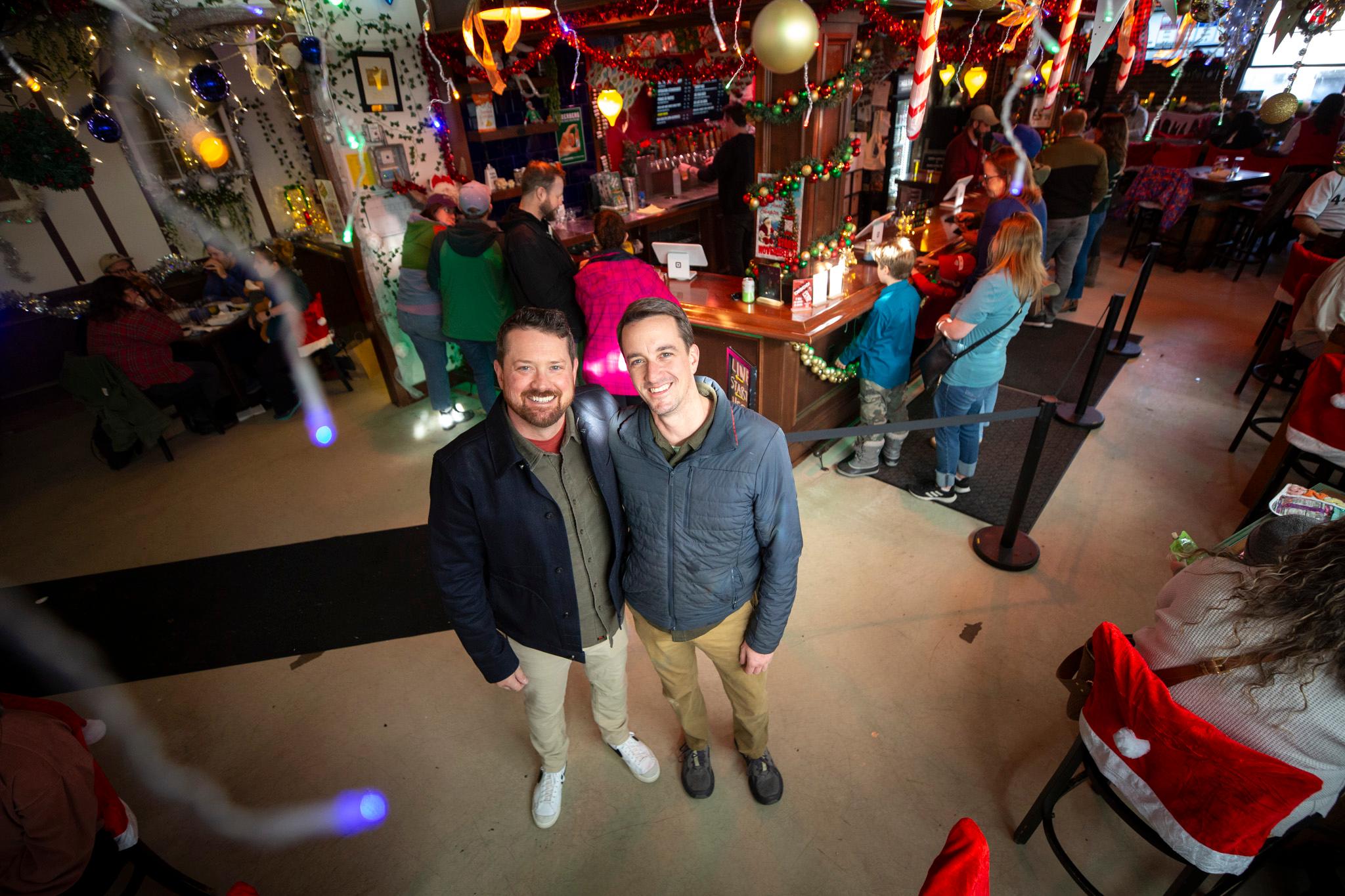On any given night, some 5,000 men, women and children are living on the streets or in emergency shelters or transitional housing in the Denver area.
The figure has hovered over 5,000 each of the last three years in the seven counties comprising metropolitan Denver. It is tallied here and across the United States during the 24-hour period at the end of January when volunteers and homelessness service agency staff carry out the Point-in-Time survey.
Point-in-Time gives us a vast snap shot -- across the country, the 2018 count showed just over half a million people were experiencing homelessness. If it were a photo essay, the next image might be of a family that's back living in the car but wasn't counted during Point-in-Time because dad had scraped together enough money for a hotel room that night. If it were a documentary, the next frame might show a military veteran moving into her own apartment after a stint in a housing program that also offered mental health and other therapy funded by policy makers moved to action by Point-in-Time data about chronic homelessness.
Critics raise issues such as accuracy given the narrow definition of homelessness used for the count; and equity, given concern the process leaves out whole classes of people. Even the most enthusiastic proponents acknowledge that the story Point-in-Time tells needs to be augmented by other counts and more research. People working to end homelessness agree they can't reach their goal without numbers to inform strategies and an understanding of trends that indicate successes and failures. The Point-in-Time enables local communities to compare how they are doing with counterparts across the country and against data that has been building since the first count in 2005. The data includes demographic descriptions and responses from people experiencing homelessness to such questions as how long they've been on the streets and whether domestic violence, mental health status or other factors contributed to their situations.
Point-in-Time "is the best we've got. But is it really good enough?" said Donald W. Burnes, whose resume includes serving on the board of the Metro Denver Homeless Initiative, which organizes the region's Point-in-Time, and founding the Burnes Center on Poverty and Homelessness, which is a University of Denver think tank.
One compelling reason ensures the count is done year after year:
"Because Congress requires it," Burnes said with a slight, mischievous smile.
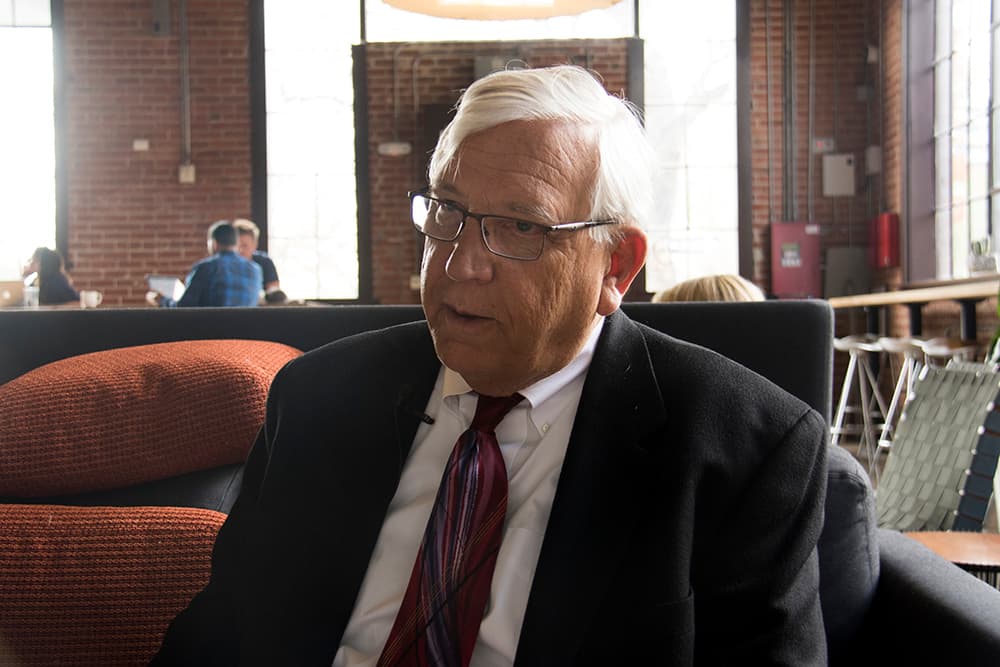
The U.S. Department of Housing and Urban Development compiles the Point-in-Time results into an annual report to Congress. HUD requires that cities and towns receiving federal money to help people experiencing homelessness conduct a count of everyone in shelters and transitional housing each year at the end of January. A count of people experiencing homelessness who are not in shelters, a more difficult undertaking, is required every other year, though most communities do that annually as well.
Diane Howald, regional Point-in-Time coordinator for the Metro Denver Homeless Initiative, was recruiting volunteers and donations to gear up for this year's Jan. 28 -- from sundown Monday to sundown Tuesday -- tally in Adams, Arapahoe, Boulder, Broomfield, Denver, Douglas and Jefferson counties.
During a training session a week before the count, Howald told volunteers who will be putting questions to people experiencing homelessness in shelters and on the streets that they and peers across the country would be following HUD-approved methodologies. Because of those standards, she said, once the results are in "you know exactly what it means and what it's telling you about one specific evening."
Howald told Denverite she was looking forward to a more efficient count of people in emergency shelters because of recent upgrades to the region's homeless management information system, which is software HUD requires but leaves to local agencies to select.
"We have to do this. It does bring in $25 million to our communities."
Howald was referring to federal funding for housing. And Point-in-Time could mean future support. A HUD initiative launched in 2017 called for grant applications from communities who could devise innovative ways to help young people experiencing homelessness. In 2018, HUD announced $43 million in funding to 11 communities. The Denver area wasn't among the winners, but Howald said it came close. Applicants had to demonstrate, among other things, that they had a high number of young people in need of help. Young people experiencing homelessness are notoriously shy of officials wielding clipboards, preferring to stay in the shadows, perhaps out of fear of being sent back to homes they fled because of abuse or into a foster care system they distrust.
A youth advisory committee has been formed in part to make suggestions about how to improve the local count among young people experiencing homelessness in hopes of a successful application this year, Howald said. That might sound to some like serving people experiencing homeless is an industry bent on expanding at the taxpayer's expense. But Howald said she doesn't lose sight of the goal of working herself out of a job.
"Hopefully I can get a job in another field," she said.
Point-in-Time, she added, is not just about the money.
"It does tell us more about our communities."
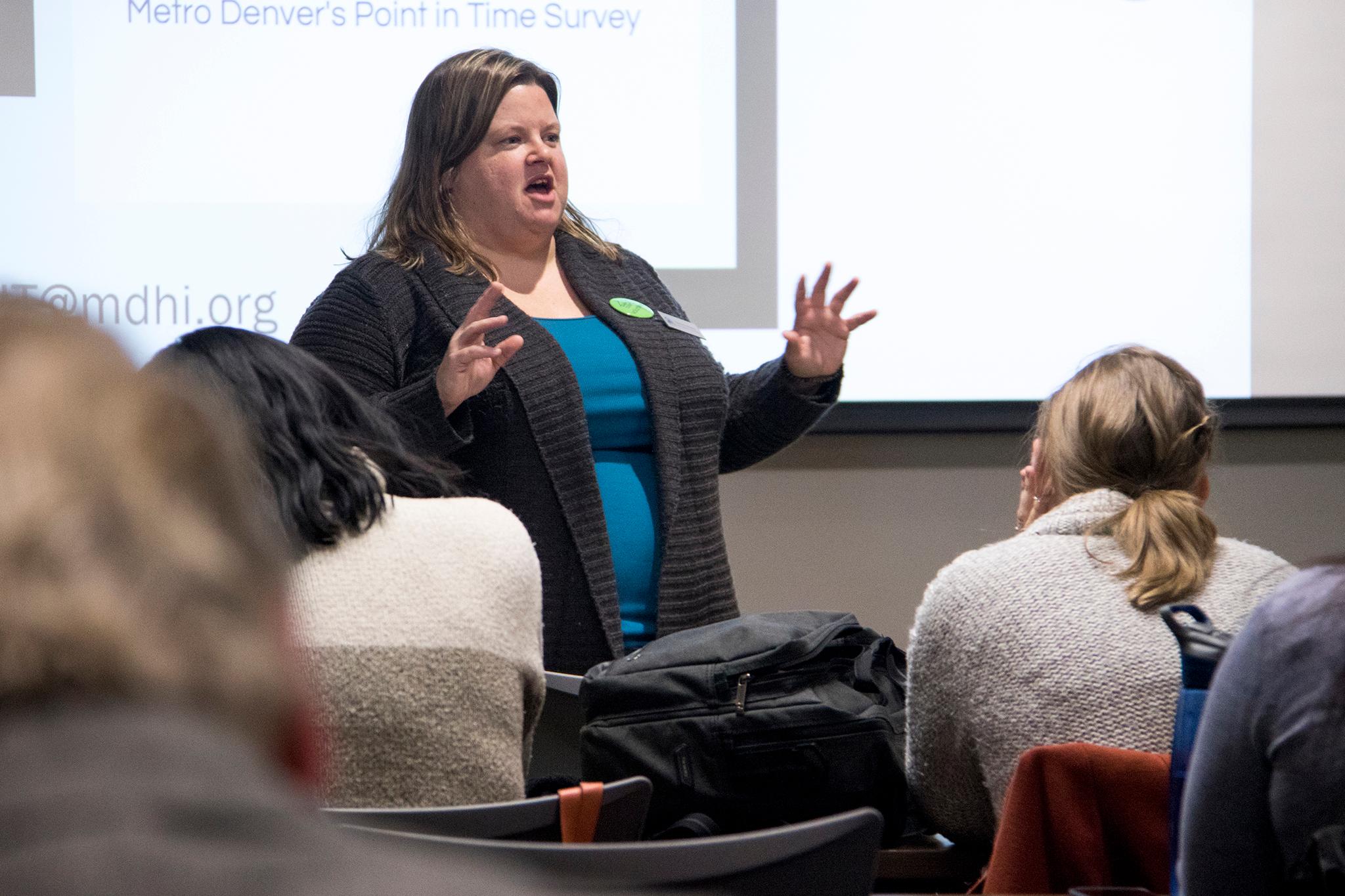
Only Denver and Aurora have the kind of outreach teams that can seek out people experiencing homelessness who are not in shelters, Howald said. Elsewhere in recent years, she said, Point-in-Time in the Denver area has featured more of what are known as magnet events, such as offering hot food or warm clothing or a chance to do laundry at a shelter or community center -- part of why donations are sought as part of Point-in-Time planning -- in hopes of drawing in hard-to-count people. That's a sign of new seriousness about addressing homelessness in places like Arapahoe and Adams counties, Howald said. She said it was difficult to put a figure on what it costs to conduct a Point-in-Time count because so many of the participating government and nonprofit agencies that take part assign regular staff to the effort alongside volunteers. Last year, she said, $30,000 in cash and in-kind donations helped make the count possible.
"One of the bigger things about how to improve the count is to have our partners understand it more," she said. "People always talk about it being a huge undercount. My goal is, "How can we make it be less of an undercount?'"
"There isn't other, nationally used comparable data," she said, saying the eyes of policy makers and others are on Point-in-Time. "We need to do our best to share the full picture and do it where people are paying attention."
She added Point-in-Time is also an opportunity to offer services. For example, when an enumerator hears that someone just added to the homelessness count served in the military, they ask whether he or she wants to be contacted by a veterans service officer who can help connect them with VA benefits. One day, Howald hopes, a volunteer counting homelessness might be able to call in a VSO on the spot.
"They can be in supportive housing the next day," Howald said.
HUD and Veterans Affairs have set a goal of ending veterans homelessness with such programs as HUD-VASH, which combines permanent HUD rental assistance with case management and clinical services provided by the VA and others.
Burnes, the researcher and former member of the board of Howald's Metro Denver Homeless Initiative, questions whether such benefits might be realized with a less frequent expenditure of time, money and donations. He and Howald noted that some people experiencing homeless refuse to take part, saying they've answered questions before and their plights have not changed.
"If U.S. Census surveyed people every year, people would get very tired of being surveyed," Burnes said.
"Why should it be any different for people experiencing homelessness?"
He's not suggesting a 10-year schedule. Maybe every three or four years, with the interval being used to analyze data, as is the case with the census, and study how to improve the count. One area Burnes and others believe deserves more attention is the HUD definition of homelessness. Under HUD rules, Point-in-Time counts only those in transitional housing, emergency shelters, or unsheltered -- on the streets, in tents, in cars.
A family evicted from an apartment that finds shelter in a dilapidated Colfax motel or is able to move in with relatives would not be homeless under those rules.
The latest HUD report to Congress on Point-in-Time said the number of families with children experiencing homelessness has been dropping nationally, by 2 percent between 2017 and 2018 and by 23 percent between 2007 and 2018. But in late December when the report to Congress came out, Family Promise of Greater Denver had a wait list of more than 60 families in need of shelter. In Denver and across the country, Family Promise Executive Director Allie Card said, rather than resorting to a tent, people with children choose motels or doubling up with family and friends.
Those solutions are precarious, Card said. She knows of children who saw adults using drugs at motels. Relatives or friends who take in families experiencing homelessness are often housing-insecure themselves and could end up evicted for housing more people than their leases allow, Card said. Families don't just double up, she said. Some triple or quadruple up as housing prices rise and wages stagnate in the Denver area.
"We're seeing more and more folks getting pushed out of housing," Card said.
In addition, parents experiencing homeless might be less likely to be candid with a Point-in-Time canvasser for fear they will be deemed unfit and have their children taken away.
"We are missing this huge, vulnerable population," Card said. "We need to see it as a bigger priority."
Life for families experiencing homelessness is unpredictable. Parents spend the day trying to find a place for their children to sleep that night, then start the search again the next day, Card said. That makes basing Point-in-Time on one night a year seem arbitrary. Especially when decisions about funding shelters for families and addressing the broader housing crisis with tools such as rent stabilization or tax credits can hinge on the results.
Point-in-Time's timing does allow for the results and analysis to be ready by year's end and inform decision-making in the next year.
But Leslie Foster says the January date can skew results.
Foster is president of The Gathering Place, a Denver nonprofit that provides meals, laundry services, a place to rest during the day and other support for women, their children, and transgender individuals. Foster sees more people at The Gathering Place during the summer than during the winter. Many women experiencing homelessness with their children are fleeing domestic violence, she said. During the winter, when shelters are likely to be full, they prefer to endure abuse so that their children are at least warm and don't have their schooling disrupted. Come summer, the women take their kids and flee.
In the past The Gathering Place has held magnet events for Point-in-Time, devoting staffing and resources to, in the end, count only a few people. This year, Foster simply plans to have forms ready for anyone who wants to be interviewed.
"I don't think people mean badly. I just think systems have come up. When it comes to counting homelessness, women need a new system," she said. "The sad thing is that it (Point-in-Time) is in fact what a lot of people are using to base public policy on."
Women who spend days at The Gathering Place but nights at a friend's have been baffled, Foster said, to learn that they don't count when they are interviewed for Point-in-Time. She quotes a typical reaction: "Even though I'm sleeping on somebody's couch and I think I'm homeless, HUD doesn't think I'm homeless?"
Foster concludes: "It's a flawed count and basically has the effect of making a lot of the people we serve more invisible."

Will Connelly, former executive director of the Metro Denver Homelessness Initiative, explored the definition issue in a forward to the group's 2017 Point-in-Time report. He made no apologies for focusing on people "who are sleeping in cars and in camp sites ... youth, families and single adults who have been living in our shelter system for years. This is unacceptable and acts as a clear call to action. We need to prioritize our funding and high-performing housing interventions to those children, youths and individuals and families who are experiencing homelessness captured by HUD's narrow definition."
The Metro Denver Homelessness Initiative nonetheless also often points to other accountings, including those undertaken by school districts. Federal law requires schools to ensure that students who are experiencing homelessness have the right to enroll in schools and a chance to succeed in the classroom. As part of that responsibility, districts report annually to the U.S. Department of Education on the number of students who can't be sure of a place to sleep every night. For the reasons Family Promise's Card described, the Department of Education does not consider motels and other families' homes an adequate option for families who have lost permanent housing or are experiencing economic hardship.
The contrast between the figures compiled for HUD and those for educators can be striking.
For the 2016-17 school year, Denver Public Schools considered 2,013 of its total of 90,000 students to be experiencing homelessness. About half those Denver students experiencing homelessness were in the category "doubled up due to economic crises." Jefferson County schools, with a total of more than 86,000 students, had 2,825 students considered homeless -- nearly 80 percent of those were doubled up, so their families would not have been counted for HUD.
The 2017 Point-in-Time was taken during the 2016-17 school year. It, like most such counts, found the majority of homelessness in Denver, where by far most emergency shelters are located. Of all the 5,116 people in homelessness according to the 2017 Point-in-Time, 3,335 were in Denver. Fewer than 400 were counted in Jefferson County.
Let's make a conservative estimate. Say each of those students was living with a single parent. That would mean at least 4,000 people were experiencing homelessness in Denver, not counting adults without children. That's higher than the Point-in-Time count for Denver, but not as much higher as our double-the-number equation puts Jefferson County, at more than 5,000.
According to state officials, across Colorado, the number of students experiencing homelessness under the broader definition used for education has more than tripled since the 2003-4 school year, to 24,685 in 2014-15.
Jefferson County begins collecting the data when families register their children for school, said Naomi Xayavongsa, who coordinates the district's Community and Family Connections program. Families asked about their housing can answer, for example, whether they are living with relatives. Outreach workers would contact such a family to determine whether it meets the Department of Education's definition of living in homelessness. Throughout the year teachers, social workers and others who have reason to believe a child might be housing insecure report to Xayavongsa's office for follow up.
In addition to collecting information about homelessness to relay to the Department of Education in June, Xayavongsa and her staff sign needy families up for the free lunch program and other food programs, offer hygiene items and laundry services and direct them to nonprofits who can help with housing.
"These living situations change so quickly and frequently," Xayavongsa said, saying a one-day count and a narrow definition would not capture the scope of the problem.
Xayavongsa said she knows of one family who cannot afford their own home living with a relative who has a mental illness. At times, the relative's behavior is so unsettling that the family spends the night in the car. Another family is doubled up with a grandmother who has so little space that two children sleep on cots in the kitchen.
"Definitely not ideal situations," she said. "But not qualified (as homelessness) under the HUD definition."
Xayavongsa said a better understanding of such situations might lead to more attention in her county to the need for shelters and for affordable housing.
Cathy Alderman, the Colorado Coalition for Homeless's vice president for communications and public policy, said based on other counts and what care providers like her organization are seeing, the Point-in-Time figures would probably need to be multiplied by 2 and a half times to give an accurate picture. But she said Point-in-Time nonetheless points to trends that help policy makers decide where to allocate resources.
Among other counts that complete the picture is the Colorado Coalition for the Homeless's tally of people who have died in homelessness. Each year at the winter solstice, the coalition organizes a vigil at which scores of names are read, a moment of remembrance for those who died in homelessness. An accompanying report from the coalition is a reminder of how much those living in homelessness are like those who are housed. In all, 233 names were read this past December. Among them 91 causes of death were confirmed, and drug overdose was the primary cause. Unsurprising given America's opioid crisis, and a sign more needs to be done to address addiction, Alderman said.
"We've got to do better," she said.
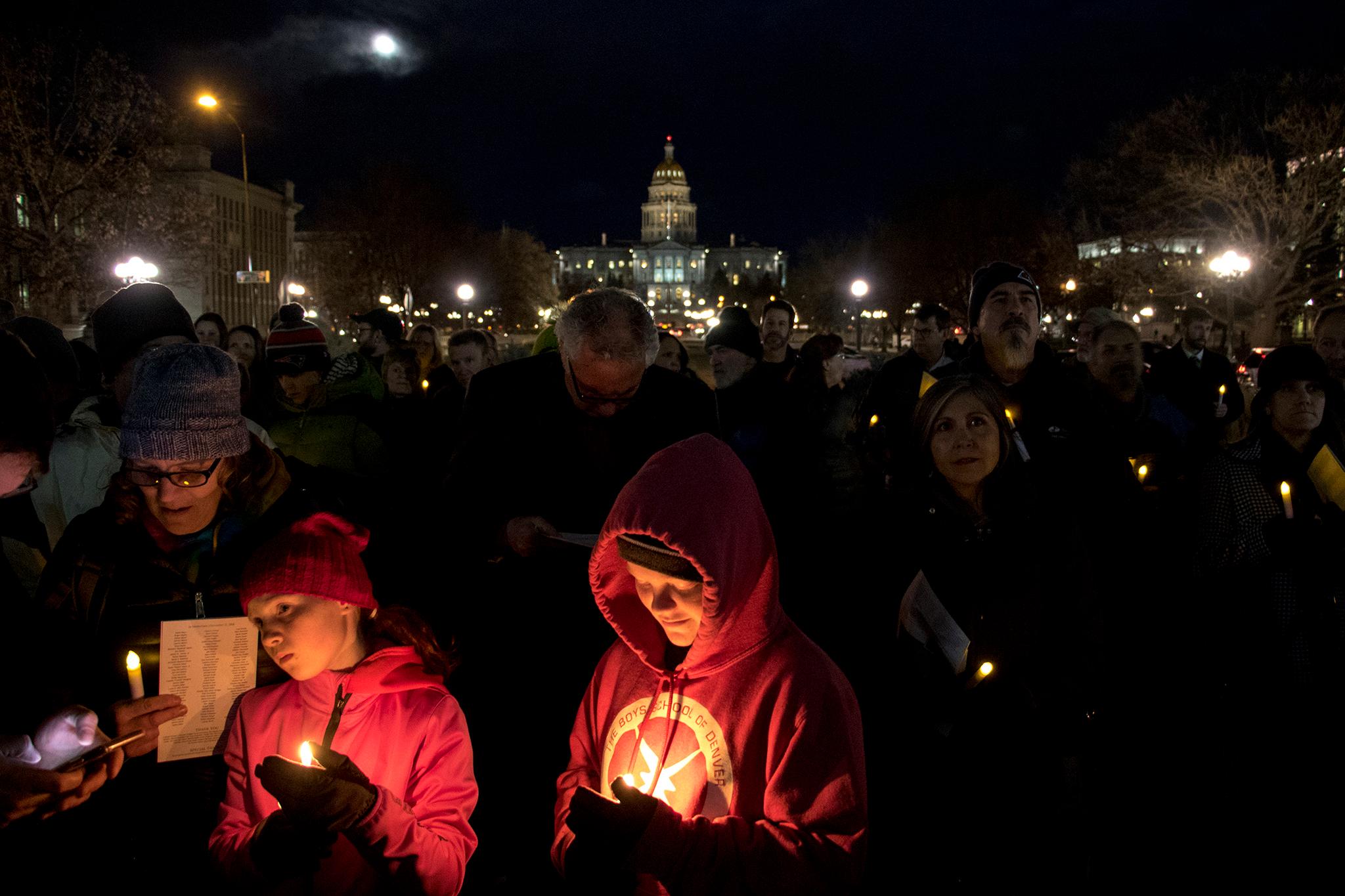

The number of dead rose in 2018 for the fourth year in a row.
"Is that because we're getting better at counting or there are more people dying or is it some of both?" Alderman said. "I think it's some of both."
It was reminiscent of Howald, of the Metro Denver Homeless Initiative, talking about Point-in-Time counts that are showing a growing number of people living on the streets, as opposed to in shelters.
"We tried harder" to count them, Howald said, citing magnet events as an example of the greater effort. In addition, "we all know we are seeing more people."
Perhaps we need more than numbers. Perhaps we need names.
Like Marsha Brown, shown in a video on the "Close to Home" website fighting back tears as she describes getting a phone call from the hospital after her teenage son had been hurt by a drunk driver. Brown stopped working to care for her severely injured child. After going through her savings, she ended up living in her car. George Seals talks in another video about hoping no one he knew would see him visiting a food pantry after he lost his job in the Great Recession.
The "Close to Home" network makes its storytellers available for public talks about homelessness. Julie Patiño directs the basic human needs program of the Denver Foundation, which has lent support and guidance for "Close to Home," aimed at spurring action to end homelessness by building empathy among a public that Denver Foundation research shows can be judgmental of those who struggle.
Patiño said hearing the "lived experience" can help researchers understand why some people don't seek help and are hard to count. That can help improve Point-in-Time research. Patiño, a civil rights and poverty law litigator who experienced homelessness as a child and later as an adult, serves on a Metro Denver Homeless Initiative committee working to improve the count. Her committee focuses on ensuring minorities are not overlooked.
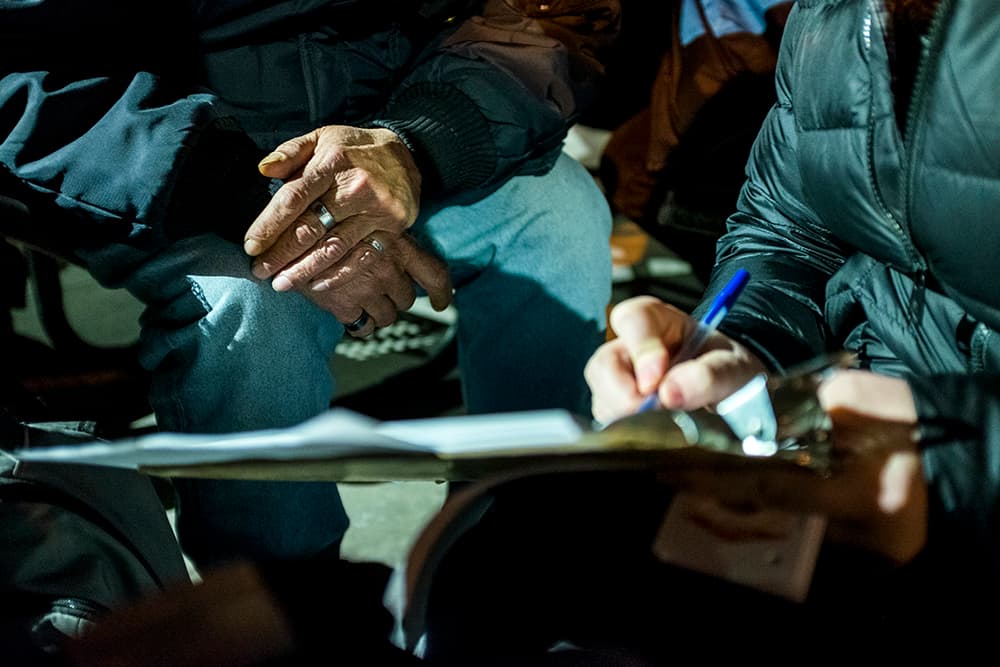
Trust will have to be built before Point-in-Time can reach people who might fear talking to anyone who looks like an authority. Concern over immigration status or wariness created by generations of racism will have to be overcome.
"It's costly to do what I'm describing," Patiño said.
But worth the effort, she believes.
"The whole purpose of the Point-in-Time is to learn how to combat homelessness. Let's not forget that for one moment."











